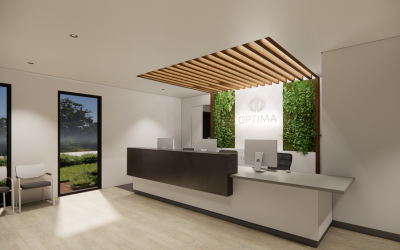We all know COVID-19 has forced people to change almost every aspect of their daily routine, adding a layer of stress when venturing outside of the home. Even essential activities like visiting the dentist have been impacted, with social distancing, mask-wearing, as well as waiting room limits and staggered appointments adding to the social tension.
It’s our job as industry professionals to make these appointments as normal as possible in a challenging time, going the extra mile to ensure the customer experience is outstanding, rather than lacking.
While COVID-19 has severely impacted local businesses, it has provided an opportunity for dental practice managers and owners to revisit and reassess their own patient experience practices.
There are numerous components to building a better customer experience for your patients, from the layout of your waiting room, through to communication; how staff greet and address patients etc.
Sometimes, however, knowing what to keep, stop, and start in your practice can be challenging, and puts you at risk of unnecessarily changing something that was working, or implementing something that does not have the desired positive effect on a patient’s visit.
It is becoming increasingly common for practice managers to take a human-centred approach to problem solving. So, what is it?
Human-Centred Design: A Key To Patient Experience
The notion of human centred design is that you should understand the people who experience a problem before you create a solution to that problem.
What differentiates human-centred design from alternative problem-solving approaches is the deep understanding of the person experiencing the ‘problem’ – and crucially, from their perspective. Your business hinges on the happiness of your patients, so why not work to understand their needs and whether they are being effectively met. By putting yourself in the patient’s shoes, the changes you make to your practice will be informed, rather than an assumption, and have the biggest impact possible.
To take this one step further, incorporating your patient into the process can prove most effective. This does not mean getting a patient to take charge of redesigning the layout of your practice, but it could be as simple as getting patients to complete a survey help direct you in where you can better meet their needs.
Putting It Into Practice
There are countless, subtle customer issues that may go unnoticed in day-to-day operations that can be uncovered and solved by human-centred design. For example, hearing dental instruments in use from the waiting room can be a cause for anxiety for many patients. Ensuring appropriate noise insulation is in place is a simple but important fix.
Some common areas that human centred design can improve the experience of patients are the physical design of a practice, and of course customer service practices.
Practice Design
Design is a simple, yet often overlooked consideration in dental practices. But considering patient satisfaction can be won and lost the first time someone enters your practice, it’s hugely important. While design is a broad term that encompasses the layout, flow, lighting, colour palette (just to name a few), it is a crucial element to get right for ongoing satisfaction. Details as small as the chairs used in the waiting room, or amount of natural light can have a profound effect.
While the waiting room should be a comfortable space for returning patients, it is also your first point of face-to-face interaction with new patients. The waiting room is your first opportunity to demonstrate your business’s values through your space and interaction, telling them that you care, without having to say it.
Service
Creating a warm, welcoming environment must be backed up by great customer service. Setting high standards and a strategy for friendly, welcoming staff interactions is just the beginning of what you can achieve with customer service.
While we can educate staff on client communication, human interaction is not always controlled. We can add practices to automate many areas of the practice through technology.
For example, while patients will never be fond of waiting times, they are often unavoidable. Counteracting this perceived negative with a positive, such as free Wi-Fi, a coffee bar, or interactive technology such as iPads will make their waiting experience far more enjoyable.
Your Turn
The way your practice looks, feels, and how you interact with your patients are just a few of many areas of a dental practice that can be improved by human-centred design. Taking extra time to invest in understanding and solving your patients’ problems will solve many more before they even arise, as well as building a better business, for everyone that walks through your doors.
While we simply can’t put all the answers in this blog, feel free to get in touch to discuss your visions for your practice.



